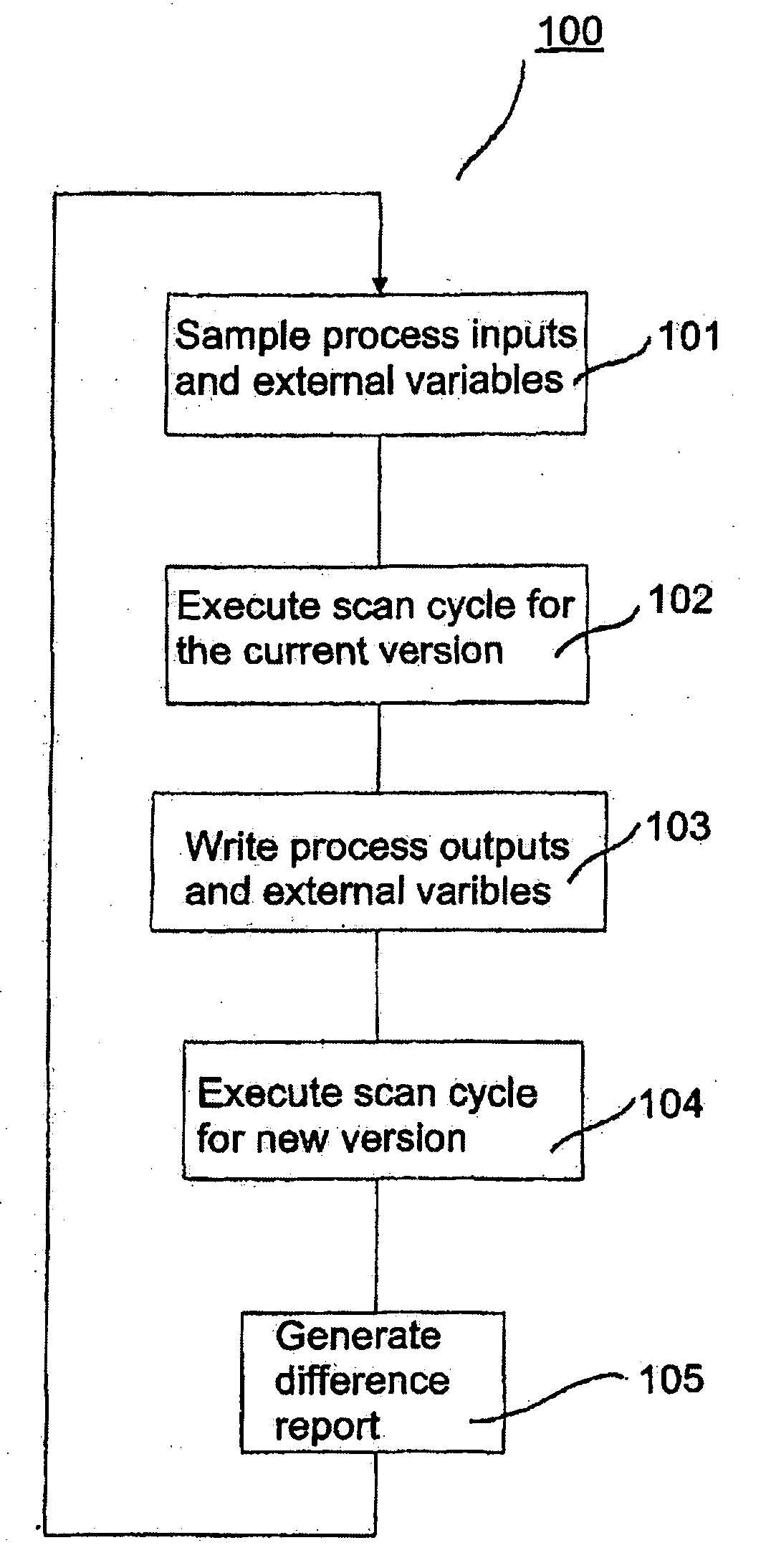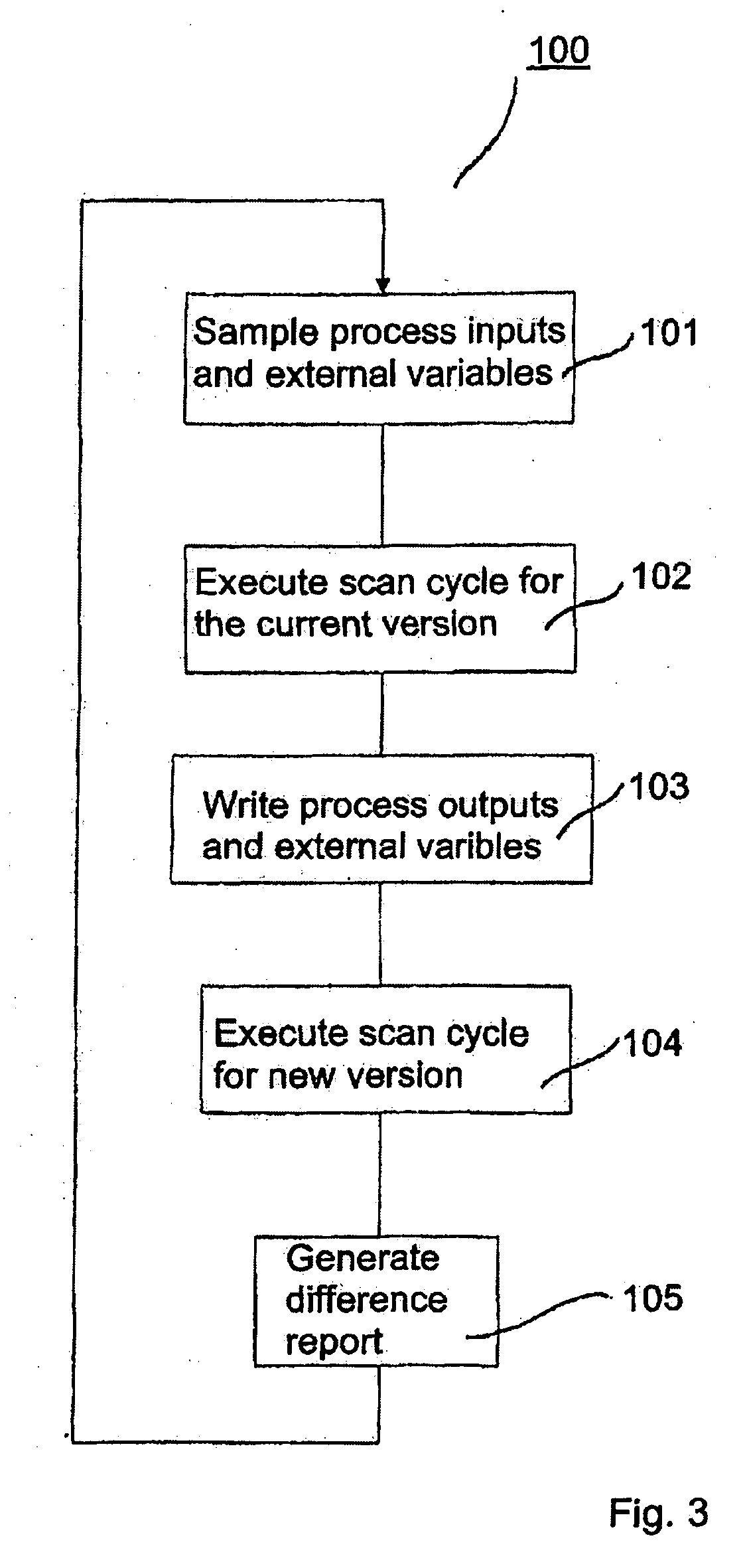Method For Evaluating, An Automation System And a Controller
- Summary
- Abstract
- Description
- Claims
- Application Information
AI Technical Summary
Benefits of technology
Problems solved by technology
Method used
Image
Examples
Embodiment Construction
[0024]With reference to FIG. 1 the layout of a typical process control system is shown. Process control systems 1 typically consist of operator and engineering workstations 2a, 2b, . . . , 2n, a number of servers 3a, 3b for performing various kinds of system functionality and controllers 4a, 4b, . . . 4n performing the actual automatic process control functions. The different parts are interconnected by means of a communication network 5. The controllers 4a, 4b, . . . , 4n control a respective process section or function; in the figure the controller 4a is shown to control a process section 6 comprising a tank and a number of valves, actuators and sensors. Each process section or function, such as the process section 6, may be dependent upon an upstream and / or a downstream process section or function (not shown), as is indicated by the arrows P1 and P2.
[0025]A general principle for the execution of control programs in a controller is shown in FIG. 2. The controllers are typically pr...
PUM
 Login to View More
Login to View More Abstract
Description
Claims
Application Information
 Login to View More
Login to View More - R&D
- Intellectual Property
- Life Sciences
- Materials
- Tech Scout
- Unparalleled Data Quality
- Higher Quality Content
- 60% Fewer Hallucinations
Browse by: Latest US Patents, China's latest patents, Technical Efficacy Thesaurus, Application Domain, Technology Topic, Popular Technical Reports.
© 2025 PatSnap. All rights reserved.Legal|Privacy policy|Modern Slavery Act Transparency Statement|Sitemap|About US| Contact US: help@patsnap.com



